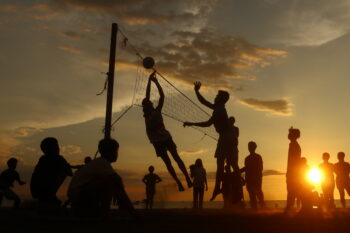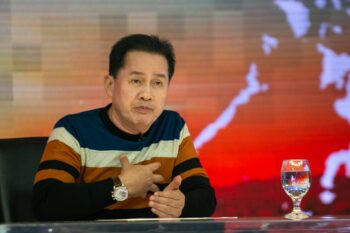GENERAL SANTOS CITY (MindaNews/ 09 Jan) — What is at stake at the Bangsamoro Organic Law plebiscite on January 21 and February 6?
Not the ratification of BOL which is a certainty but the assurance of the unity and resolve to make Bangsamoro a reality. It means not just a majority but a unanimous YES of the five provinces constituting the vital core of Bangsamoro and their component cities.
Voting Trend
As seen by Luwaran.com, the official website of the Moro Islamic Liberation Front Information Committee in its editorial, “The Tipping Point” (January 1, 2019), by the “prevailing trend”, BOL will be ratified, “GOD willing!”
According to Luwaran: The YES-trend is prevailing in “the provinces of Maguindanao, Tawi-Tawi, Basilan, and Lanao del Sur, including the cities of Marawi and Lamitan.” However, “Isabela City, Sulu, and Cotabato City remain slightly problematic. Some politicians here continue to fight tooth and nail to make the no votes prevail.” They will vote on January 21.
These five provinces and their four component cities are the vital core of Bangsamoro Autonomous Region in Muslim Mindanao (BARMM) or Bangsamoro, in short. They compose the Autonomous Region in Muslim Mindanao. While Cotabato City (included in Maguindanao) and Isabela City (in Basilan) opted out of the ARMM in the plebiscites of 1989 and 2001, they were vital to the ARMM – the first as the seat of the autonomous government and the second, the capital of Basilan.
Unless the NO-votes can reverse the YES-trend in the four provinces and two cities, the vital core will remain territorially intact. BOL (Art.XV, Sec. 3a) provides that the five provinces and the cities of Marawi and Lamitan “shall vote as one geographical area” – meaning, a NO-vote of Sulu will not severe it from the ARMM. Even if Cotabato City and Isabela City would still refuse to join Bangsamoro, they will continue their political, economic, social and cultural co-existence with their parent-provinces.
To vote on February 6, are the other proposed core areas of Bangsamoro, namely: (1) the six towns in Lanao del Norte and 39 barangays in six North Cotabato towns that voted yes for inclusion in the supposed “expanded” ARMM in the 2001 plebiscite; and (2) all other areas of the local government units contiguous with the ARMM that had petitioned, as provided by law, for inclusion in in the BARMM. Luwaran said, as of January 1, the outcome of the February 6 voting could go either way.
As of the latest report (The Philippine Star, January 5, 2019: 20 North Cotabato villages to join BOL plebiscite), the Comelec had received a total of 103 petitions for inclusion in the BARMM from “other contiguous areas”. Twenty from four municipalities of North Cotabato have been granted : those of Barangays Libungan Torreta, Upper Pangankalan, Datu Mantil and Simsiman in Pigcawayan; Pagangan in Aleosan; Langogan, Pebpoloan, Kibayao, Kotulaan and Tupig in Carmen, and Rajahmuda, Barungis, Gli-gli, Nalapaan, Palicupan, Nunguan, Manaulanan, Bulol, Bualan, and Nabundas in Pikit.
Only the expansion of BARMM is at stake in the February 6 voting. All those which will vote YES will support whatever BOL provides for Bangsamoro.
Despite the opposition in Sulu and the uncertainty in the “contiguous areas”, Luwaran has rated the support for BOL in the four other ARMM provinces and two component cities as “unprecedented” – not the “bandwagon effect” known in Philippine elections. It said: “In the case of the BOL, the people of all sectors are convinced of the need to vote yes and ratify the BOL because it is for peace, justice, progress and development, and unity. It is very inclusive. Everybody and all sectors will benefit from it.”
Talking Point Satisfied
Luwaran’s assessment means that “How to Solve the Moro Problem”, the talking point of the MILF in their two-decade negotiation with Philippine Government has been satisfied in, even if not fully granted, as revealed by those voting for ratification. BOL provides the means for Bangsamoros to determine for themselves the life of “peace, justice, progress and development, and unity”. But the YES-trend only assures the installation of Bangsamoro. Is that enough?
BOL is like a rope. Used well, it can hoist the Bangsamoros over the steep wall to realize self-rule; or, misused, they can hang themselves with it.
The NO-votes in Sulu and other parts of the four ARMM provinces will not stop the establishment of Bangsamoro. But, unless their number and influence are reduced to insignificance, they can obstruct the Parliament and the ministries; they can derail governance down the local government units.
Through BOL, the national government has guaranteed Bangsamoro the means needed for sound political and economic autonomous take off. However, success will greatly depend on the Bangsamoro political and economic leaders. If the autonomy fails to take off as programmed, Bangsamoro will be in trouble.
The same can be said of assistance from foreign governments and agencies. We believe their continued initiative in funding development programs and projects and, in the process, coordinating directly with the MILF leaders, reflected their appreciation of the Government-MILF agreements. However, failure of the Bangsamoros to make BOL work can adversely affect foreign assistance.
“How to solve the Moro problem” has been translated into BOL. Unanimous support by Bangsamoro government units and their leaders, not just by the MILF, is necessary to make BOL work after its ratification. This is what is ultimately at stake in the plebiscite.
Challenges to NO-Votes
Luwaran describes the BOL opponents as “some politicians [who] continue to fight tooth and nail to make the no votes prevail.” Obviously, they are not just from Sulu and the cities of Cotabato and Isabela. “Their reasons,” according to Luwaran, “are personal, tribal, or mundane or earthly. They are making a political issue out of the BOL, which is apolitical, by linking the plebiscite with the May 2019 local elections”.
Whatever “their reasons”, it is not the fallacy or unreasonableness of these that will matter but the adverse conditions the opposition will continue to create in Bangsamoro. For instance, in Sulu, the opposition from the local political leaders including MNLF Chairman Nur Misuari can be conducive for the Abu Sayyaf. Will Bangsamoro be able to do better than the national government in solving the Abu Sayyaf problem?
The post-plebiscite implication on peace and order of the opposition to BOL will be the major challenge to Bangsamoro. Without the unity and resolve of all – meaning, ALL – Bangsamoro leaders the Abu Sayyaf, Bangsamoro Islamic Freedom Fighters and the terrorist groups including the much-feared ISIS will frustrate the Bangsamoro take off.
The implication on the other aspects of Bangsamoro autonomy of the opposition to BOL may be considered minor; yet, for the fledgling Bangsamoro, they cannot just be swept under the rug.
It is imperative that in the January 21 plebiscite all Bangsamoro leaders in the five provinces and four component cities of the ARMM put aside their personal, tribal and political differences and through their votes express their unity and resolve to make BOL work to establish Bangsamoro now and for generations to come.
That is what is at stake.
patponcediaz@yahoo.com







